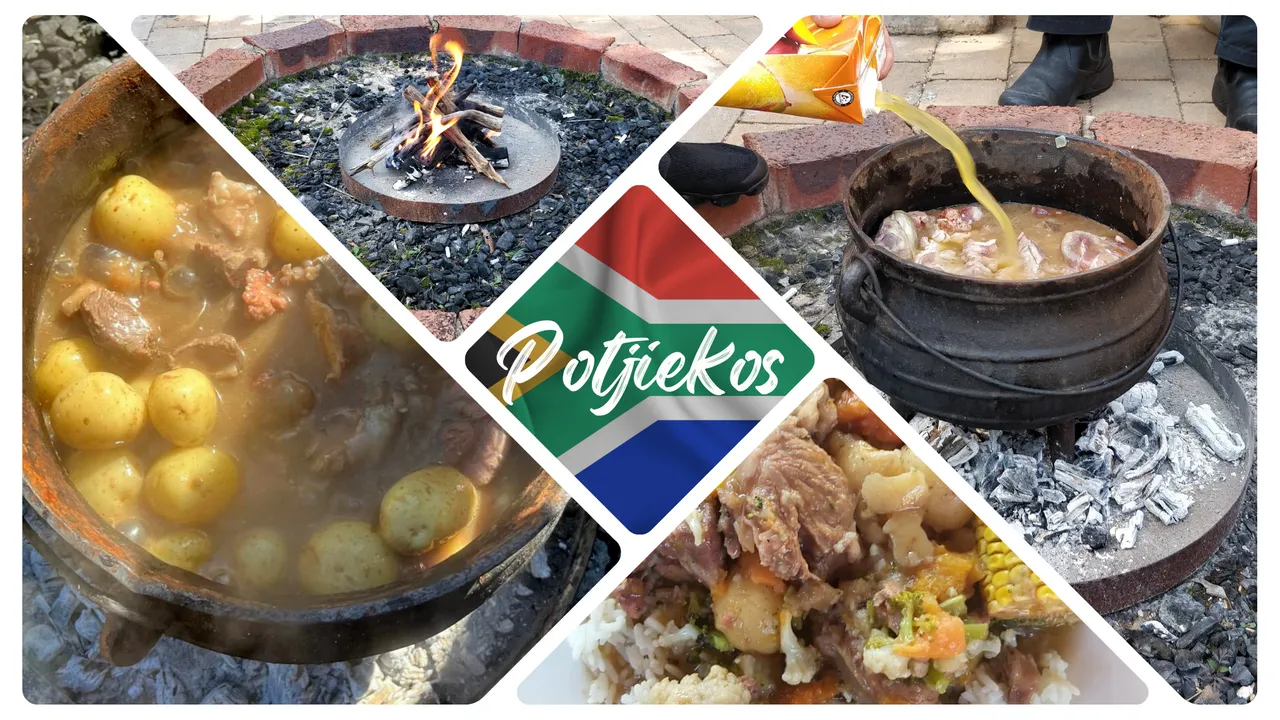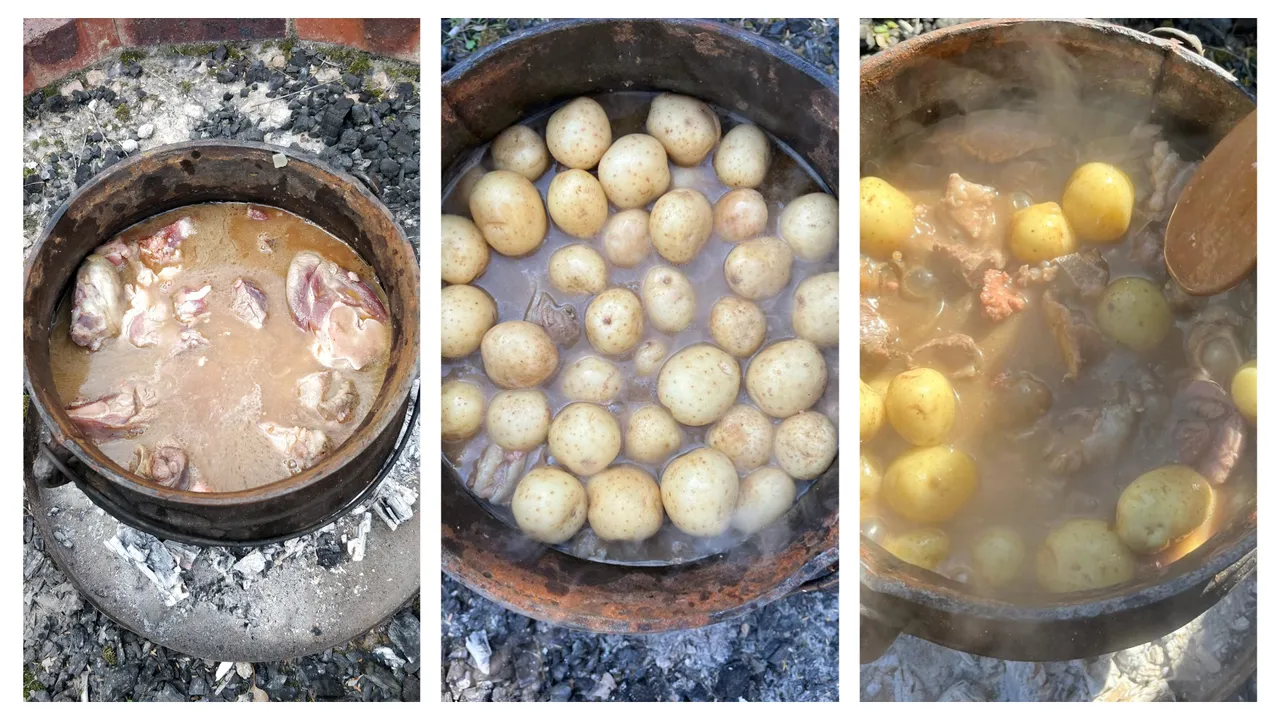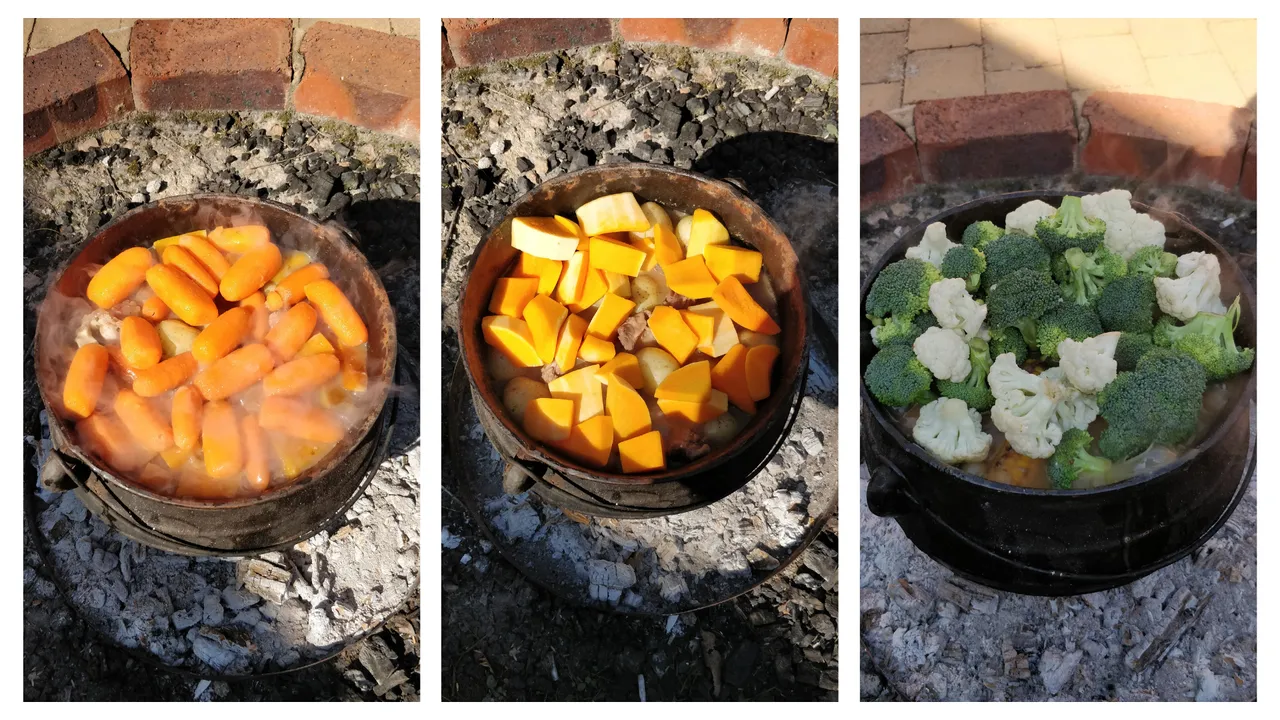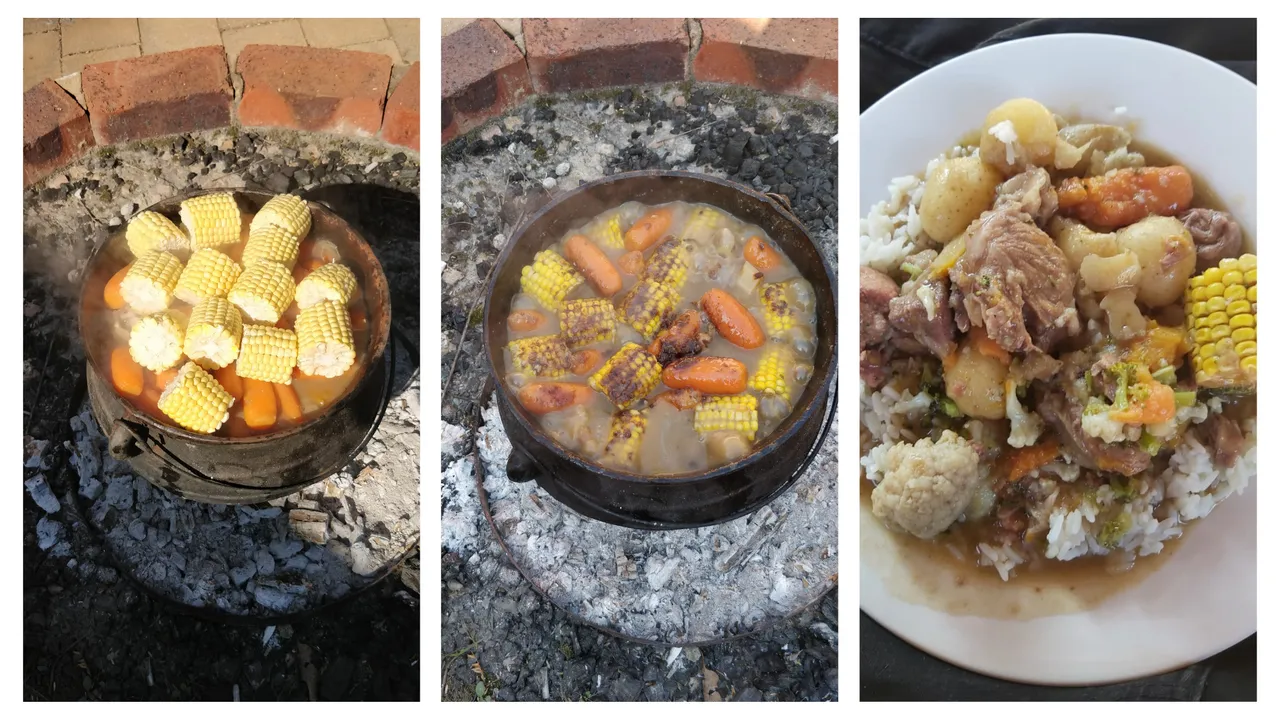
This past Sunday, I had the wonderful privilege of indulging in a very South African tradition with a few friends. We spent the day enjoying each other's company while preparing something most South Africans have experienced at least once, potjiekos.
It was when one of my international friends asked what we were up to this weekend when I realised just how South African this particular tradition is. While describing to my British friend how we were spending the day, I realised that this could actually make for a fun blog post. So I set about snapping several photos over the course of the day!
Potjiekos is an Afrikaans word that roughly directly translates to "small pot food". The word potjie, also Afrikaans, means small pot. But in the context of South Africa, when you say you are making a potjie, you don't mean you are creating an actual pot. Nope, it means you are going to be cooking in one. And don't be fooled by the name. Pojties come in all sizes, not just small!
A potjie is actually a cast iron pot, usually with three legs. It is a 'descendant' of the dutch oven. The dutch oven is a thick walled, iron cooking pot that made its way to South Africa from the Netherlands in the 17th century. The potjie remains widely used in many households throughout our country! Food is cooked in the potjie over coals or a fire.
Now you are probably wondering what exactly it is, that you cook in the potjie. Most traditional potjiekos have some form of meat and vegetable component. Much like stews and soups, the variety of combinations is exhaustive. For the potjie we had, the meat component was Karoo lamb.

The first step in any pojtie event is to get the heat ready. In this case, we had a separate fire where wood was burned until it became hot coals. These coals were then moved into position under the pot. This is so that the heat can be kept even and controlled.
First in, some chopped onions. This was followed by the lamb and some bacon was also added.

Some soup stock makes sure the meat does not burn or dry out. The lid is put on the pot and the meat gets a good long while to cook, while we get some time to socialize! Next in is the baby potatoes. They also need a while to cook, so they are the first of the veggies to go for a swim. in the third photo above you can see they are starting to get nice and cooked. The smell coming from the pot was already delicious at this point!

Then it was time to add some colour! Carrot hearts (because the local grocer didn't have baby carrots in stock), butternut squash, broccoli and cauliflower. Each added in their own turn and was given the chance to cook down. And yes, we did start to wonder if we shouldn't have sized up on the pot, haha.

Last in was the corn. Corn is not something that normally gets added to our potjies. We usually opt for mushrooms. However, one of our friends is allergic to mushrooms, so it was swapped out for corn instead.
After many hours of cooking, and I do mean many hours, the potjie is ready! Potjiekos is a fun social event on account of the fact that it takes a long time to cook. So there is a lot of time to socialize and hang out in between. The fire was already lit when we arrived at around 10 am. Food was served at around 3:30 pm. Potjiekos is usually served with starch such as rice or pap.
Now I am not going to give an exact recipe, as I am pretty sure the chef of the day might get angry at me for giving out his secrets (That, and I sort of lost track of everything he was doing). Every potjie chef has their own methods and tricks, which makes every potjiekos a unique experience. There are even competitions around this! And our chef friend does pretty well in them!
What I will tell you, is that this particular potjiekos is one of the best I have ever had. Every morsel of food pretty much melted in my mouth. And on a cold winter afternoon, a warm plate of potjiekos shared with your friends is a wonderful experience! Best of all, there was still plenty left over, so we got to take some home.
Thanks for stopping by and reading this post! If you have had Potjiekos, let me know what your favourite kind is. If not, do you think it is something you would like to taste?
Credits and Thanks:
Charl, the chef of the potjiekos. The man knows what he is doing! 👨🍳
Monique and Charl, for hosting ♥️
Charl, Monique, Günther, and Jaco for the company 😄
Wikipedia and Definitions.net for helping me to explain what Potjiekos is.
Photos by myself, Monique and Jaco. (We all had fun torturing our friends who were not there by showing off what we were looking forward to!)
Canva for helping me make the photos look pretty.
P.S. If you are wanting to try making your own potjiekos, there are plenty of recipes available online. However, if you are one of the 'cooking challenged' like I am, it may not turn out as delicious as you'd hoped. I personally leave it to the professionals 😂
